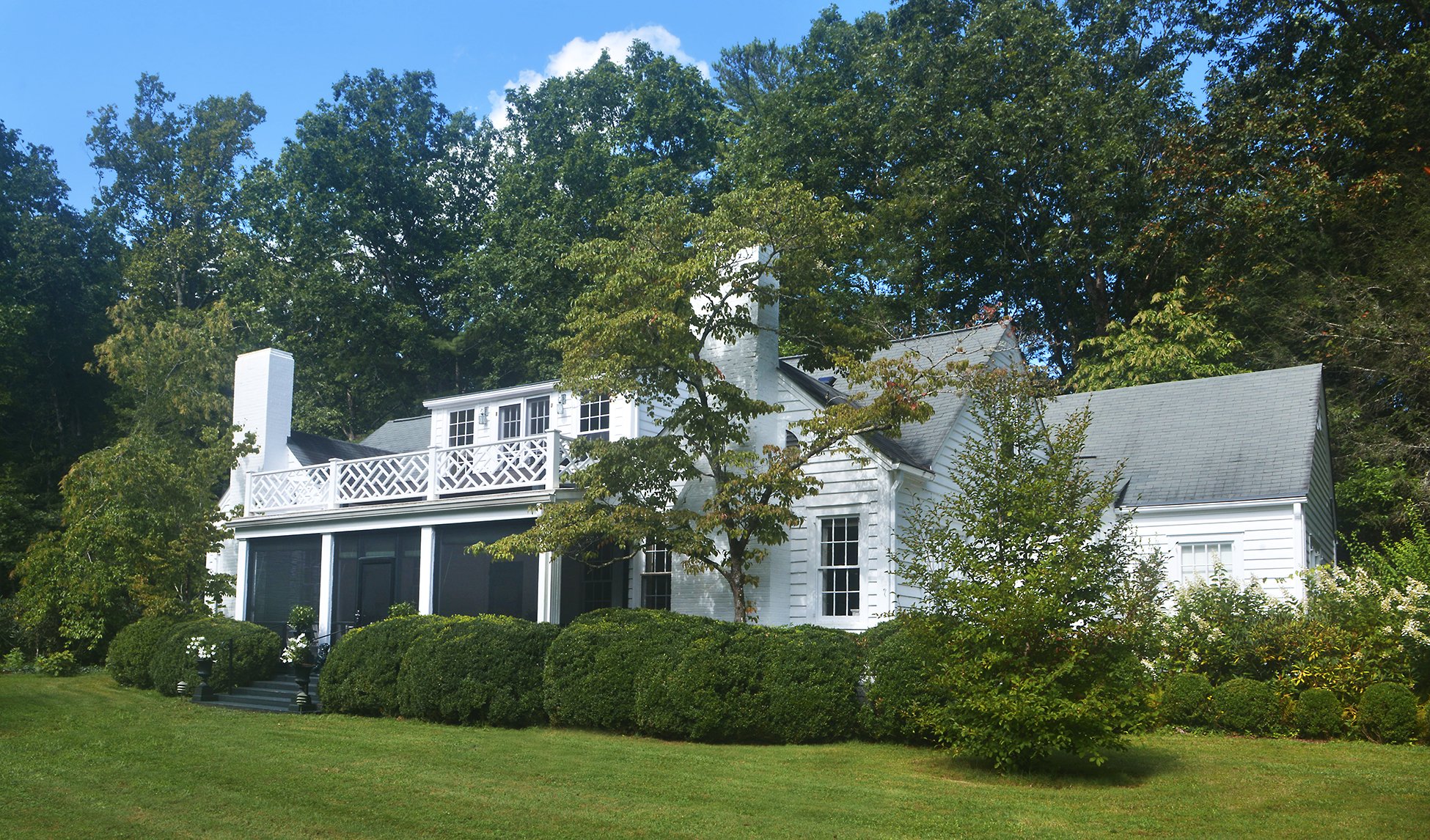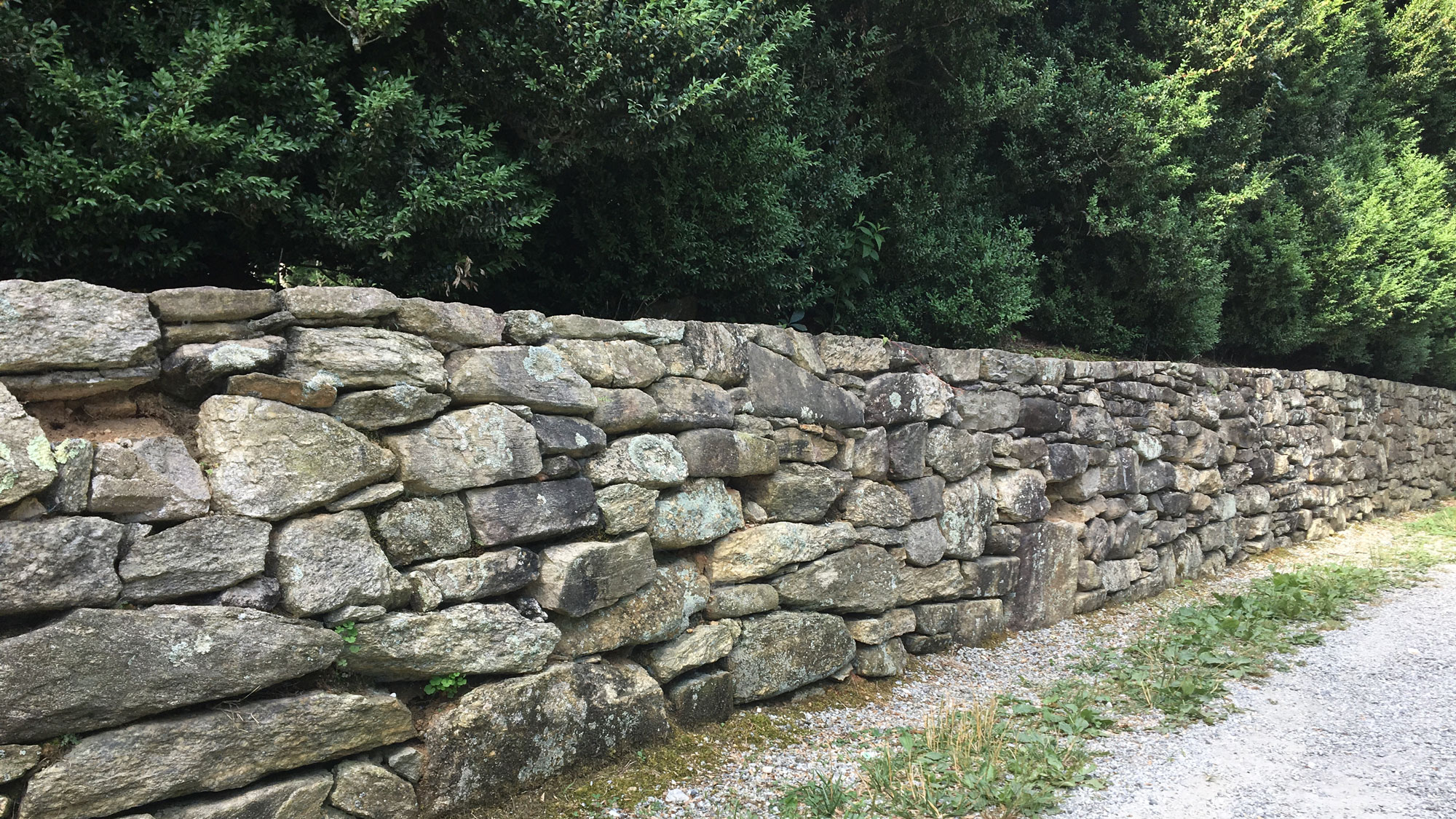Stonybrook of Flat Rock
/By Missy Craver Izard
“It all started with my grandparents,” says Francis Pelzer Maybank (Frank). “My grandfather along with his wife, owned the Dam House at Highland Lake in Flat Rock.” Highland Lake and the Maybank, Rhett, and Aiken families have a long history in Flat Rock. The Honorable William Aiken, Jr., the 61st governor of South Carolina and a U.S. congressman, purchased all of the acreage that is now Highland Lake in 1873 from George Trenholm (second secretary of the treasury of the Confederate States of America).
Originally, part of a land grant to John Earle in 1789, it is the earliest land grant known in the area that became Flat Rock in 1807. William Aiken and his wife Henrietta Lowndes gifted the land to their only child, Henrietta Aiken Rhett, Mrs. Andrew Burnet Rhett, whose father-in-law, Robert Barnwell Rhett, owned the 19th-century Charleston Mercury and was the author of the first draft of the Ordinance of Secession. The grist mill established by John Earle on the property was renamed Rhett’s Mill and the lake became Rhett’s Pond.
According to the National Register of Historic Places, “In 1910, Mrs. Rhett transferred seven acres east of the dam site to her daughter, Harriett, and her husband, Dr. Joseph Maybank.” As a wedding present, a house was built on the land given to them. Known as The Dam House, the house was in their family for 50 years.
In 1942, Dr. Maybank passed away and in 1950, his children sold the house to Cy Young. Sixty years later, in 2002, Joseph Maybank IV — Joe, great-grandson of Dr. Joseph Maybank, and his wife, Virginia, purchased the Dam House, bringing the beloved residence back into the family.
As a young boy, Frank Maybank began his relationship with Flat Rock with his family’s annual summer visit to his grandparents at The Dam House. Frank says, “They had a terrific cook, Mamie, who would prepare delicious meals in the Cook House — a building separated from and located behind the main house. Frank recalls that “all the Rhetts around the lake were called ‘The Rocking Rhetts’ because they would sit in their chairs rocking and talking.
Stonybrook of Flat Rock
“My grandfather, Dr. Joseph Maybank, bought seven acres of land off of Rutledge Drive from Mrs. Mayberry as a wedding gift for my parents,” recalls Frank. “I was around six years old when my parents found a house plan in a magazine they liked and took the magazine plan to a local contractor, KG Justice, to build it for them.
The first thing constructed was the stone bridge over the creek. Both the bridge and the house are very solid. My mother was always anxious to get things done. The old mountain folks would insist on doing things their way and sometimes it took a long time. To paint the house, they poured a variety of paint into a large metal trash can and stirred it for hours. The paint on the house lasted 30 years. I guess those mountain craftsmen knew a thing or two!”
Jane Pelzer Maybank King and her sisters
“My mother’s three sisters, Virginia Pelzer Rue — Mrs. Francis J. Rue, Frances Josephine Pelzer Huger — Mrs. Daniel Elliott Huger and Mary Randolph Pelzer Cecil Maybank — Mrs. Charles Purcell Cecil, widowed in 1944 and then married to Senator Burnet Rhett Maybank, all had homes in Flat Rock. The Huger house, Idlewild, continues to be part of their family, but the Rue home, Pinecrest and the Cecil home, Bonnie Brae, were sold some years ago. With so many cousins and family around, there was always a parade of people coming to stay and much fun to be had in a Flat Rock summer.”
A long winding gravel driveway, partially lined with boxwoods, approaches Stonybrook from Rutledge Drive and terminates with a circular loop just south of the house. Built for Mr. and Mrs. Joseph Maybank, Jr. (Jane Harrison Pelzer Maybank King) by “KG” (King Gallileo) Justus between 1937 and 1939, the one-and-a-half story Colonial Revival style residence presents a symmetrical façade with a side-gable roof and two front-gable wings extending forward to a flat-roof screened porch.
Exterior brick chimneys rise against the two front gable ends. The house is covered in weatherboards and the windows are typically six-over-six sash. A servants’ house located just south of the main residence has been completely renovated and enlarged and is now used as a guest house. A tennis court is located to the southwest of the house and overlooks a grass lawn and boxwood labyrinth to the rear of the house.
Boxwood Labyrinth at Stonybrook
The property has grown from the original seven acres to more than 40 and extends through to Trenholm Road. It includes the Pace Place, once a small family-working farm with cattle and an orchard. The farm was owned by the Pace family beginning in 1890 and bought by Mr. and Mrs. Joseph Maybank III in the 1960s. It adjoins the Stonybrook fields towards the west, and at one time it functioned as the guest house. Completely restored, this two-story farmhouse now serves as the residence of Tim and Mary Rose Maybank Bolton.
The history detective in me was curious about a person named King Gallileo Justus and called “KG.” I put it out in the social media world and within an hour, I received a message from a friend who connected me with the great-grandson of KG. Beginning in the late 1800s, KG began to make a name for himself as one of the better-known building contractors in the early 20th century in Henderson County. He built many of the large estate homes in Flat Rock and on Kanuga Road. His son, King Dorris Justus (called Jack) followed in his father’s footsteps and today the Justus family is on their fourth generation of building contractors in Henderson County.
I learned many more interesting things about the Justus family, such as that (Jack’s wife) Natalie Jones’ family once owned the Old Flat Rock Post Office and the Village Hall building. Jack’s furniture workshop was where he made the well-known Flat Rock chairs and was originally on the second floor of the Old Post Office.
Francis Joseph Pelzer II
Jane Harrison Pelzer Maybank King, daughter of Francis Joseph Pelzer II and Mary Randolph Pelzer, was born in Charleston in 1907. She was the granddaughter of Francis Joseph Pelzer, an entrepreneur and textile manufacturer who was at the forefront of two major South Carolina industries in the decades after the Civil War: phosphate and textiles. Pelzer, South Carolina was named after him.
Jane married Joseph Maybank, Jr. of Charleston and together they had two sons, Joseph Maybank III and Francis Pelzer Maybank — Frank. In the 1940s she married George Kirkwood King, a descendant of one of the forefathers of Flat Rock.
—
Shortly after building Stonybrook, the Maybanks hired Fralow D. Ballard — called Red — a caretaker who had worked under Mr. Justus, helping to build the house. He remained loyal to the family until his death in 1993. Mary Rose Maybank Bolton recalled that, as a young bride, there was a formality to the house. “Each morning, while my mother-in-law was having breakfast in bed, Red would come to the shuttered window to get his orders for the day.
Afterward, Mamie (the cook — a different one) would arrive in the bedroom to discuss the day’s menus and what should be ordered from Mr. Hill’s grocery store in East Flat Rock.
“Everyone gathered for a rather formal two-o’clock dinner in the dining room served by two maids. Thursday was everyone’s day off and if no picnic was arranged, lunch would be at a restaurant in Hendersonville. Meals on the terrace or in the pavilion did not take place until the 1980s. Evenings were for cocktail parties with family and friends in Flat Rock — rarely were there seated evening meals. The cook would put up food for supper from the midday meal for the children and the adults ate cocktail party food. The family’s much-loved laundress, Frances Turner, who is 100 years old, kept coming to work until late in life, helping with several generations of Maybanks.
“Our days were filled with activities at Stonybrook; horseback riding, swimming, tennis, croquet, badminton, walking and reading.”
I asked Mary Rose about the origin of the cottage name, Stonybrook. “As a young boy, my husband, Joe Maybank III, played in the rocky stream on the property with his cousins, Libby Maybank and Mary Huger, and with his neighbor Alicia Walker, all the time. When he was asked what a good name for the house would be, he said, ‘Stonybrook.’”
The Ballard family is familiar to many in the Green River Valley and on Mount Olivet. I contacted one of them in search of Red’s family and to my delight found Patrick Ballard, Red’s son. His stories of growing up at Stonybrook are treasures. He said: “My father would ride the bus to Charleston each spring and drive ‘Miss Jane’ back to Flat Rock for the summer. He did everything — he was a jack of all trades AND a deputy sheriff. It was a challenge to keep the house and grounds in order. When I was about 12 years old, I started helping my father at Stonybrook. My sisters would babysit and my mother assisted in multiple ways.
“Once I was big enough to push the lawn mower, I would cut the grass. Yellow jackets nested in those boxwoods. I began mowing in the early morning and would finish up around dusk to avoid the heat and yellow jackets. Possums loved those yellow jackets and I prayed they would eat all of them before I mowed. I helped my father put in the pool in 1971. We would see the most beautiful owls at night when we cleaned it. My father also built the playhouse. One year ‘Miss Jane’ decided to move the playhouse and we built a big sled and moved it across the field.
Jane Harrison Pelzer Maybank King
“Miss Jane’s grandsons, Joey, Bayard and Alexander, became my summer playmates. There were always bamboo poles in the garage, and we would dig up grub worms or catch crickets in the field to fish in Memminger Creek. It was the best fishing spot around. Joey and I would go into the woods to set off fireworks and shoot our BB guns. My entire family is grateful to have worked for the Maybank family. We were all heartbroken when Mr. Joe died in 1992. Our family has such fond memories of Stonybrook and the years we spent there.”
Jane Maybank King stopped coming to Flat Rock for the summers after Red Ballard died. Her son, Joseph Maybank III and his wife, Mary Rose, had already taken over managing Stonybrook and Mary Rose and their sons became the stewards of the property when Joe III died in 1992. With multiple architects in the family, the restoration of Stonybrook, The Pace Place and their outer buildings have given a spirit of creative enthusiasm to the preservation of the estate.
Today, Mary Rose and her husband, Tim Bolton, along with their sons Joe IV, Bayard, and Alexander and their families continue to cherish family time at Stonybrook and to honor Dr. Joseph Maybank’s family rule of spending some time in Flat Rock each summer. According to The Maybanks, “Joe III never missed a summer in Flat Rock his entire life. None of his children have either.”
Now that’s a family rule worth keeping.








